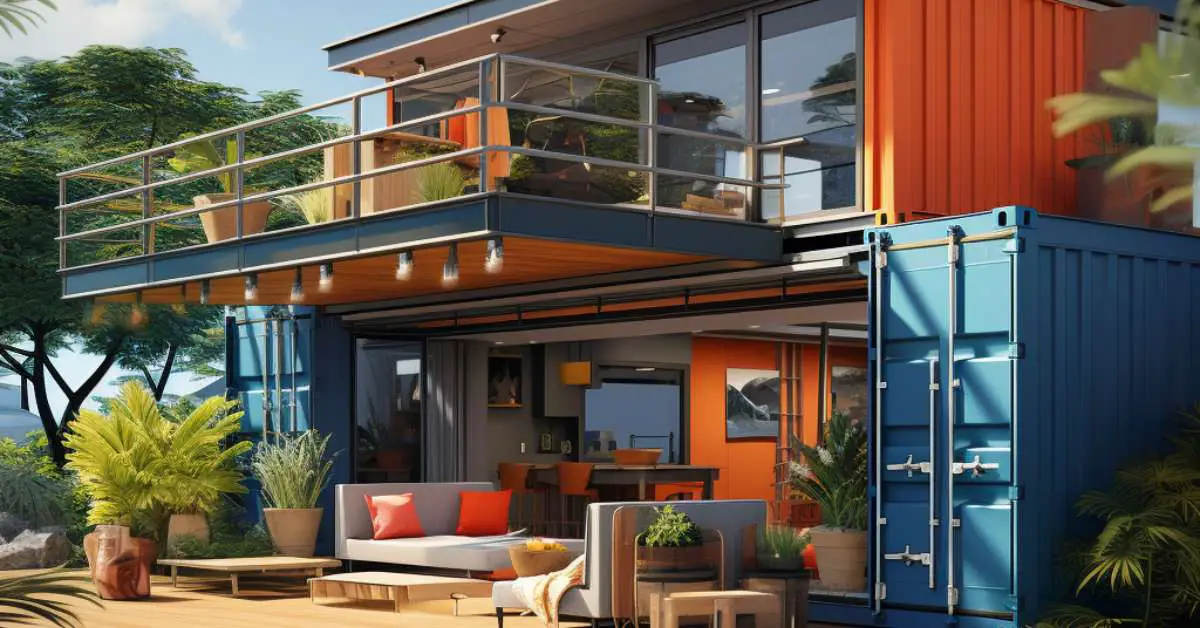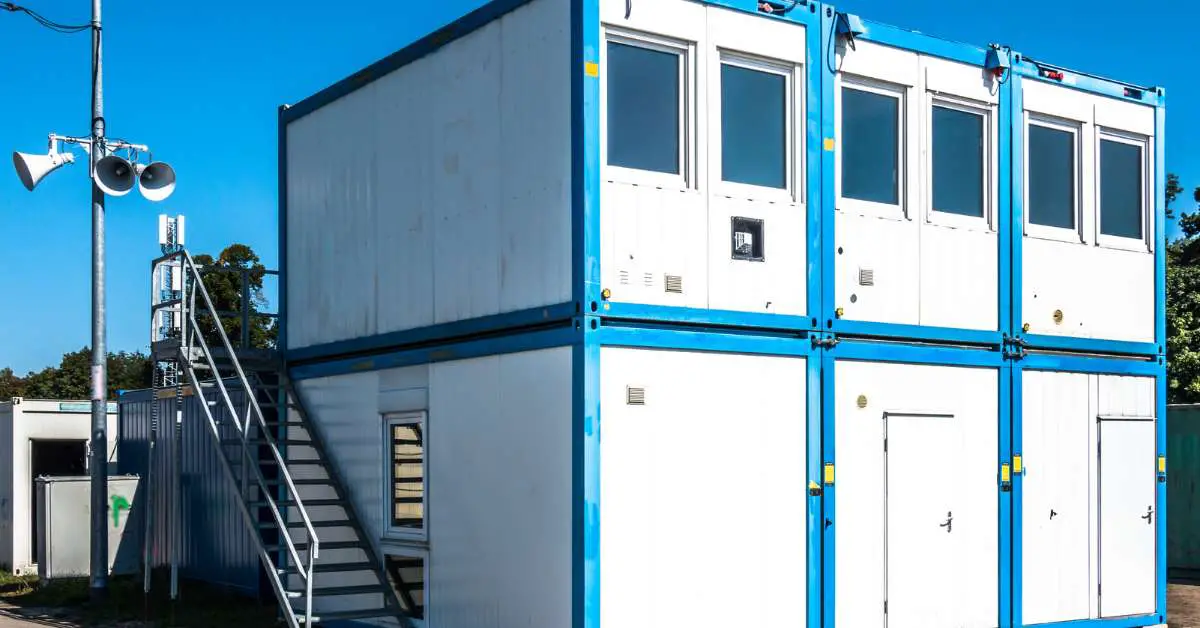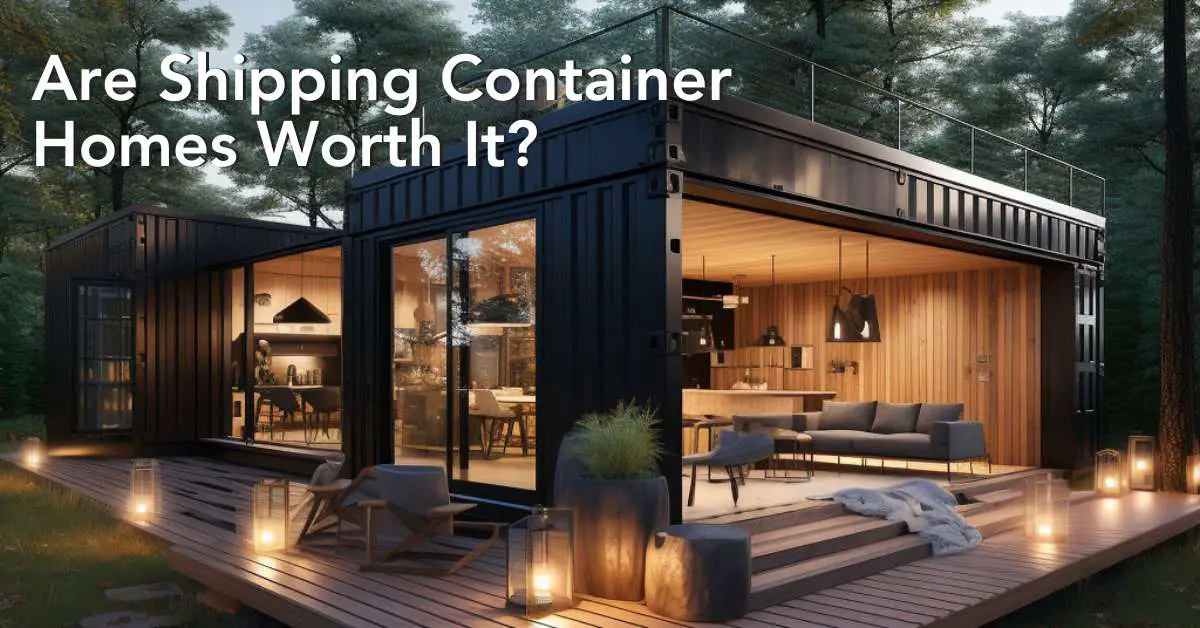You’ve seen the pictures—sleek, modern homes made from shipping containers, often set against a backdrop of rustic wilderness or urban cool. If you’re like many people, you’ve wondered, are these alternative dwellings really worth it?
The worth of a shipping container home varies depending on individual priorities, including financial constraints, sustainability goals, and design aspirations. While they provide a more affordable and potentially sustainable way to acquire a home, it’s important to weigh their unique challenges.
Intrigued? Stick around as we dive deep into what makes these unconventional homes tick. We’ll explore the costs, benefits, design possibilities, and even the legal hurdles you might face.
Why People Are Turning to Shipping Container Homes
So why are these unconventional homes catching everyone’s eye? It turns out there’s more to the shipping container home trend than just Instagrammable aesthetics. People are drawn to them for various reasons—affordability, sustainability, and the allure of minimalist living, to name a few.
Affordability: A Wallet-Friendly Option
If you’re like most people, the cost of shipping container homes is a major factor when considering getting one.
Overall, shipping container homes can be significantly cheaper than traditional brick-and-mortar houses. Especially if you’re a DIY enthusiast, you can save a lot by repurposing an old shipping container into a comfortable living space.
In fact, some have managed to build basic container homes for as little as $10,000, although more luxurious designs can cost upwards of $50,000.
For those who prefer a ready-made option, several companies specialize in turn-key container homes that are still more affordable than conventional housing options. These businesses offer a range of customization choices, and the cost usually includes delivery and installation.
When you consider the rising cost of traditional housing, shipping container homes can be an attractive option for those looking to own property without breaking the bank.
Sustainability: Upcycling with Style
In an age where sustainability is more than just a buzzword, shipping container homes offer a way to upcycle materials that might otherwise go to waste. These homes allow you to reduce your carbon footprint without sacrificing comfort or style.
By using recycled containers, you’re giving new life to an item that may have otherwise ended up scrapped or unused, reducing waste in the process.
Made from weather-resistant steel, shipping container homes are built to last, adding another layer to their eco-friendly appeal.
Additionally, their sturdy structure is ideal for locations that are prone to extreme weather conditions, such as hurricanes or heavy snowfall. This not only means fewer repairs but also less waste in the long run.
Minimalism: Living with Less

For those of you attracted to a minimalist lifestyle, container homes offer a unique opportunity to practice what you preach. These compact spaces force you to focus on necessities, cutting out the clutter that often accompanies larger living spaces.
By minimizing your living space, you can also minimize distractions, helping you focus on what really matters in life.
Their small footprint allows you to live more harmoniously with nature, enhancing the minimalist experience. If you’re the sort who’s happier with fewer possessions and a simpler lifestyle, container homes allow you to live this ethos day in and day out.
They offer an opportunity to break free from consumerism and the constant push for bigger and better that defines many lives.
Financial Aspects: Cost Breakdown
While shipping container homes can be more affordable, how do they stack up in the long run? Let’s dive into the financial nitty-gritty, from initial investment to ongoing costs and potential resale value.
Initial Investment: The Setup Costs
While the container itself may not break the bank, transforming it into a livable space comes with its own set of costs. Insulation, windows, plumbing, and electrical systems are just a few things you’ll need to invest in.
Depending on the level of luxury you’re aiming for, your initial investment could range significantly. Costs can escalate if you opt for high-end fixtures and finishes or if you plan on stacking multiple containers.
It’s also worth noting that unless you’re planning to do all the work yourself, labor costs can add to your initial investment. Skilled trades like electricians and plumbers can add several thousand dollars to your total costs.
But given the longevity and potential energy savings, many find this initial investment to be justified.
Ongoing Costs: Utilities and Maintenance
Maintenance and utility costs for container homes are often less than traditional homes due to their smaller size. However, depending on how well-insulated your container home is, heating and cooling can become an issue.
Containers are made of steel, which is not a good insulator, so you’ll need to factor in the cost of insulation materials.
Solar panels and other eco-friendly features can offset some of these costs, but they come with an upfront investment. If you’re really focused on sustainability and long-term savings, you can also look into greywater systems and composting toilets. These can reduce your water bill and contribute to a more sustainable lifestyle.
Resale Value: What Can You Expect?
When it comes to selling your shipping container home, the market is still somewhat untested. While these homes have a trendy appeal, not every buyer is looking for such unconventional living.
This can make the selling process a bit more challenging compared to traditional homes. However, as they gain in popularity and social acceptance, their resale value is expected to increase.
Due to their unique and customizable nature, shipping container homes may attract a niche market willing to pay a premium. Just like any other property, the resale value will also depend on factors like location, size, and the quality of construction.
As more people turn to alternative living options, your container home could become an increasingly valuable asset.
Legal Challenges and Zoning Laws

Let’s talk legalities. Before you start planning your dream shipping container home, it’s crucial to understand the zoning laws, permits, and potential HOA restrictions that could impact your project. As with anything involving construction and real estate, the legal landscape can be quite complex.
Zoning Laws: Where Can You Build?
Unfortunately, not all areas are open to shipping container homes. Before making any decisions, check your local zoning laws to ensure that container homes are allowed.
In rural areas, you’ll generally find fewer restrictions, while urban settings may have specific zoning codes that make it challenging. Some municipalities have zoning laws that specifically address container homes, while others lump them in with modular or prefab homes.
In some cities, special “tiny house” or “alternative housing” zoning areas are being established to accommodate unconventional home types like shipping container homes. It’s worth doing the research and even speaking with local authorities to understand where you stand. You might even consider hiring a local real estate attorney to help navigate these complex regulations.
Permits and Regulations: Necessary Paperwork
Just like any home, building a container home involves a fair amount of paperwork. From site plans to construction permits, make sure you have all the necessary documents before beginning your project.
Permits are essential for ensuring that your home meets all safety and building standards. They often involve multiple stages, including design approval, structural assessment, and regular inspections during construction.
Neglecting this step can result in costly delays and legal complications. It’s not uncommon for projects to be halted, fined, or even dismantled if they don’t adhere to local laws.
Hiring a professional experienced in shipping container home construction can guide you through this maze of paperwork and save you a lot of headaches down the line.
HOA Restrictions: What to Know
If you’re considering a location within a homeowners association (HOA), scrutinize their regulations carefully. Many HOAs have restrictions on unconventional housing types, including shipping container homes. These restrictions might relate to size, aesthetics, or even the types of materials used in construction.
Ignoring these rules could leave you with a very expensive garden ornament. Additionally, it can lead to legal disputes that could have been avoided with proper due diligence. Before buying land in an HOA-governed area, make sure you’ve read all regulations and have confirmed that your container home project will be allowed.
You might be interested to read about the differences between a container home and a tiny home.
Design and Customization Options

So you’ve navigated the legal labyrinth and have your budget set. Now comes the fun part: designing your container home. Let’s delve into your options for space management, customization costs, and how to make your home stand out while staying practical.
Space Management: Smart Storage Solutions
With limited space, efficient storage solutions are a must. Thankfully, the modular nature of container homes allows for creative space-saving tactics. This might mean built-in shelves, under-bed storage, or wall-mounted desks that fold away when not in use. Innovative storage solutions not only make life easier but also contribute to a clutter-free, minimalist environment.
From hidden compartments to multi-functional furniture, you’ll need to think outside the box—pun intended. For instance, a bed could lift up to reveal storage space underneath, or a dining table might fold down from a wall when needed.
Utilizing vertical space by installing shelves all the way up to the ceiling can also be a great way to maximize your available square footage.
Customization Costs: Keeping an Eye on the Budget

While it’s tempting to go all out on customizations, these can quickly add up. High-end finishes like hardwood floors, quartz countertops, and smart home technology are nice but can inflate your budget significantly. For every customization, there’s usually an additional cost, and it’s easy for these to pile up without careful planning.
Have a clear understanding of what you absolutely need and what you can compromise on. Be prepared to prioritize. It’s easy to dream big, but you may need to dial it back to keep your project financially feasible.
Always keep your end goals in mind: are these customizations necessary for the lifestyle you envision in your container home?
Unique Designs: Stand Out but Stay Practical
A shipping container home offers a unique canvas for your architectural dreams. You can stack containers, cut out windows or walls, or even incorporate a rooftop garden. This is your chance to build a home that’s entirely “you,” from the ground up. However, as you let your imagination run wild, keep an eye on structural integrity and local building codes.
While the sky’s the limit, always remember to balance your creativity with practicality. All those design flourishes and aesthetic elements must serve a functional purpose, or you could end up with a visually stunning but impractical living space. It’s always a good idea to consult with professionals, such as architects or engineers, especially if your design ideas are particularly ambitious.
Energy Efficiency and Sustainability
Energy efficiency isn’t just a trendy catchphrase; it’s an essential aspect of modern home design. Especially for container homes, insulation and sustainable features can make or break your living experience. A well-designed, energy-efficient home not only minimizes your environmental impact but also lowers your utility bills in the long term.
Energy-Efficient Features: Solar Panels, Green Roofs
Incorporating renewable energy features like solar panels can make your home even more eco-friendly. Solar panels can be installed on the roof or in the yard, and they have the potential to supply much, if not all, of the energy you’ll use. Some homeowners even report generating excess energy that they can sell back to the grid, effectively making their utility bills negative.
Green roofs are another option that not only improves insulation but also provides a small ecosystem. Planting vegetation on your roof helps to absorb rainwater, provides insulation, and combats the heat island effect common in urban areas.
A green roof can be particularly beneficial if you live in a hot climate, as it can significantly reduce the need for air conditioning. These features can have higher upfront costs but often pay for themselves in the long run through energy savings and possible tax incentives.
Insulation: Key to Comfort
Proper insulation is crucial in making a metal box livable. Steel, the material from which shipping containers are made, is a poor insulator. This means you’ll have to add substantial insulation to make the home comfortable. Materials like spray foam insulation or insulated panels are commonly used in container homes to trap heat or cold air effectively.
Different types of insulation are more suitable for different climates. If you live in a colder area, you may need insulation with a higher R-value, a measure of thermal resistance.
Do thorough research or consult with a professional to determine which type of insulation fits your climate and budget best. Proper insulation not only affects your comfort but also your utility bills, making it a crucial aspect of home design.
Sustainability Over Time: Is It Truly Eco-Friendly?
While the idea of upcycling a shipping container is inherently sustainable, the real test comes over time. For instance, if you install energy-hungry appliances or fail to maintain your insulation, the home’s overall sustainability decreases.
Regular maintenance and a commitment to energy-efficient appliances can go a long way in keeping your home eco-friendly over the years.
Also, consider the sustainability of your building materials. Many people choose recycled or upcycled materials for the interior, like reclaimed wood or recycled glass countertops. The paint you use can also have an impact; look for low-VOC or VOC-free paints to keep your indoor air quality healthy. Every choice you make, from the roofing material to the floor covering, can either contribute to or detract from your home’s long-term sustainability.
Common Concerns and Solutions

By now, you’re probably curious about some of the more practical aspects of living in a shipping container home. How quiet is it, really? What about safety considerations and managing moisture?
Soundproofing: Finding Quiet in a Metal Box
Metal structures like shipping containers are notoriously poor at blocking out noise, which can be an issue if you live near a busy street or have noisy neighbors.
However, there are several ways to soundproof your container home. Additional layers of insulation not only improve temperature control but also dampen sound. Acoustic panels can be added to the walls and ceiling to further reduce noise.
Beyond internal adjustments, external modifications like planting a natural barrier of trees can absorb sound and create a quieter living environment. Some people even build decorative yet functional walls or fences filled with noise-dampening materials like sand or rubber to deflect sound away from their living spaces.
While complete soundproofing may be challenging to achieve, these methods can considerably reduce noise pollution.
Safety: Chemical Treatments and Paint
Shipping containers are built to withstand the rigors of ocean travel, and as such, they’re often treated with strong chemical paints, fungicides, and pesticides. These chemicals can off-gas and pose a health risk if not properly addressed. One option is to look for containers that have been treated with non-toxic coatings, although these can be more expensive.
Before converting a used container, consider sanding down the interior and exterior surfaces to remove chemical treatments, then re-sealing them with a non-toxic, low-VOC paint. Always use proper safety gear when dealing with chemical treatments, and consider consulting professionals for this part of the project to ensure a safe living environment.
Condensation: How to Manage Moisture
Moisture can be a significant issue in compact, sealed spaces like shipping container homes. Without proper ventilation and moisture barriers, your home could become a breeding ground for mold and mildew. One of the most effective ways to manage moisture is to install a high-quality ventilation system that can circulate air and remove humidity.
Another strategy is to use moisture barriers and vapor retarders in your insulation system to prevent condensation from forming on the walls. These layers trap moisture and either wick it away or enable the ventilation system to remove it. Simple measures like exhaust fans in bathrooms and kitchens, as well as dehumidifiers in particularly damp areas, can also go a long way in maintaining a healthy indoor environment.
Conclusion: Are Shipping Container Homes Right for You?
So there you have it—a comprehensive look into the world of shipping container homes. They offer a unique, cost-effective, and potentially sustainable way of living, but they’re not without their challenges.
Navigating through legal hurdles, optimizing for energy efficiency, and ensuring your new home meets all your needs will require effort and due diligence. But if you’re looking for a living option that aligns with a minimalist or eco-friendly lifestyle, or you’re a prepper aiming for self-sustainability, then a shipping container home could very well be worth it for you.







